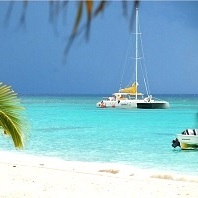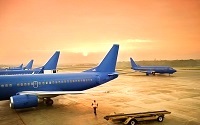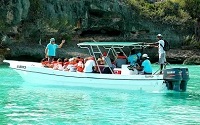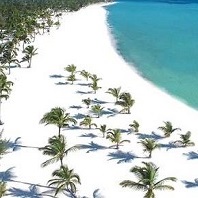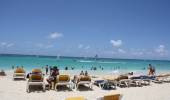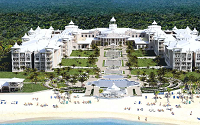Facts and Info about Punta Cana

 Dominican Flag
The name Punta Cana in Spanish means 'tips of white palms'. And Punta Cana, situated on the Caribbean island of Dominican Republic,
rightly proves so.
Dominican Flag
The name Punta Cana in Spanish means 'tips of white palms'. And Punta Cana, situated on the Caribbean island of Dominican Republic,
rightly proves so.
It is the most sought after tourist destination of the Caribbean and known for its beautiful and pristine beaches. The beaches are lined
with an alley of dense palm trees. For this reason Punta Cana and Bavaro are nicknamed La Costa del Coco, or the Coconut Coast.
Practical Info Punta Cana
More practical and useful information to know before arriving in Punta Cana, can be read in the Before You Travel sector of this site.
| Power supply: | 110V, with 3-pin flat blade plugs as standard (same as in the US) |
| Tap water: | Not potable in Punta Cana |
| Health Risks: | Dengue fever and malaria are somewhat of a risk (remember to bring along a strong bug spray) - more: Health Risks |
| Crime: | There are few instances of petty crimes yearly, but with proper preparation these can be prevented - more: Safety Risks |
| Prostitution: | Prostitution is legal in the Dominican Republic and very visible in tourist areas. Brothels or similar establishments are illegal |
Dominican Republic Facts
| Official Name the Country: | Dominican Republic / Republica Dominicana |
| Capital and largest city: | Santo Domingo (population close to 4 million) |
| Population: | about 10 million |
| Official Language: | Spanish |
| Official Tourism website: | Godominican Website |
| Official Currency: | The Dominican peso (signed as RD$ or DOP) |
| Time zone: | Atlantic (UTC-4) - during the summer same as New York or Toronto |
| Independent: | since 1865 |
| GDP per capita: | $9,286 (average for Latin America) |
| People living on less than $2/day: | 15,1% |
| Head of State: | President Danilo Medina since 2012 |
| Drinking age: | 18 |
| Emergency phone number: | 911 |

